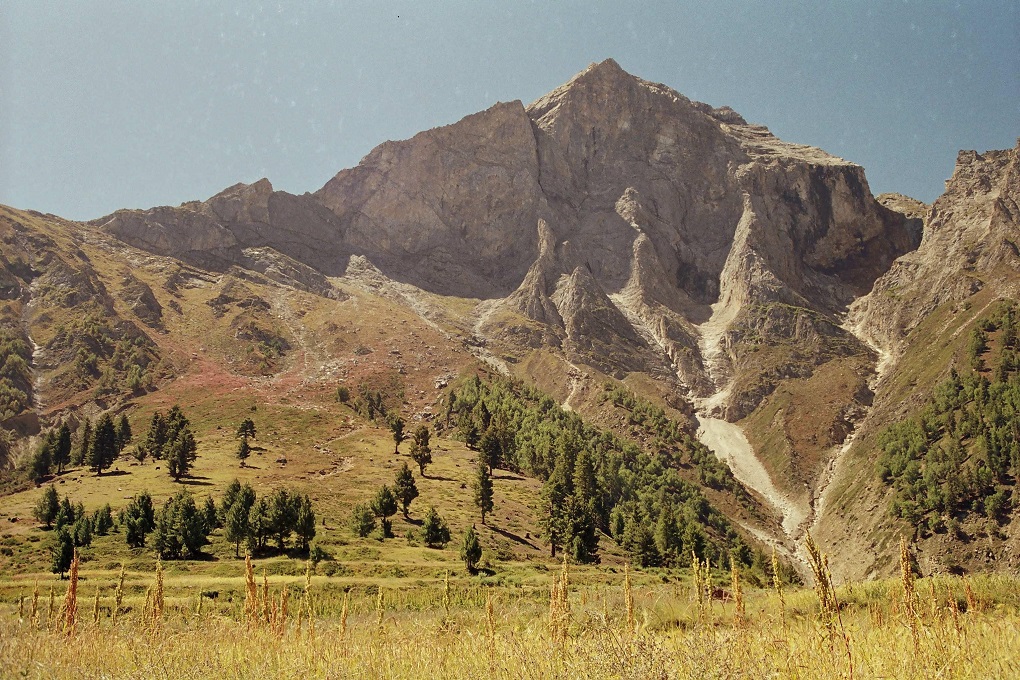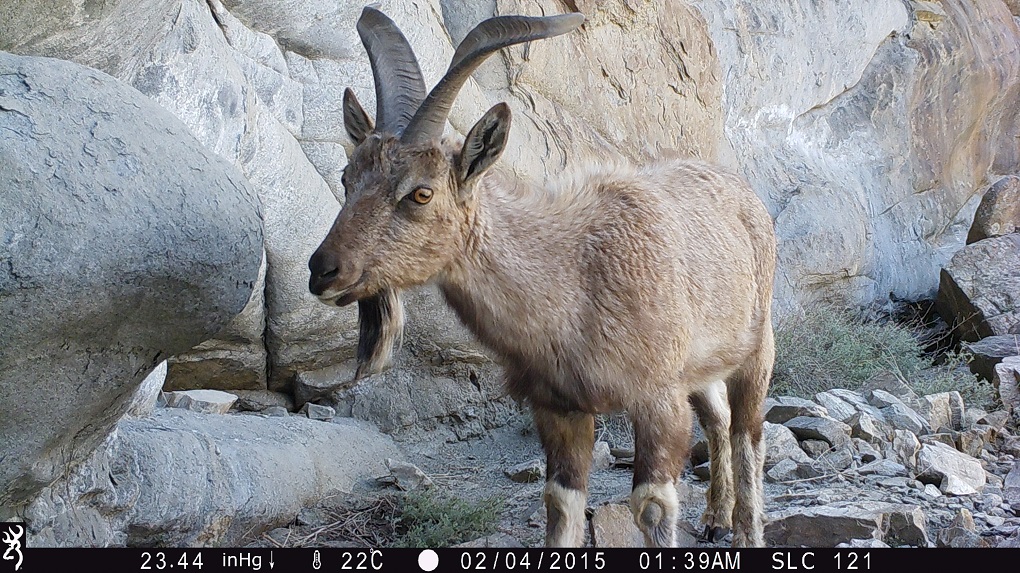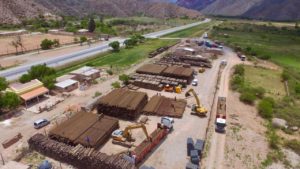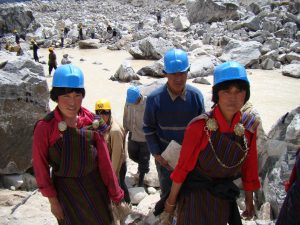The good news is that the trophy hunting programme for markhor, the wild goat that is Pakistan’s national animal, has led to an increase in its population. Found in Gilgit-Baltistan, in the valleys of Chitral, Kalash and Hunza, in Pakistan’s north, the markhor had become so rare it was hardly ever sighted. That is changing, although the markhor is still on the IUCN’s list of the near threatened. But now, many villagers say the wild goat can often be seen climbing down the perilous terrain.
It is not the only good news. The money that comes with the business of hunting the wild goat, whose distinctive screwhorns can extend up to five feet (1.5 metres) in length, has brought prosperity to the poverty-riddled villages. The bad news is that it has also bred greed, conflict and dissent.
With new money, new conflicts
Thirty eight community areas have been notified as hunting spots by the government. These comprise different areas, sometimes including just one hamlet, and sometimes – like the three villages of Skoyo, Krabatang and Basingo in Gilgit-Baltistan (G-B) – marked for trophy hunting. These three villages, in the Baltistan part of G-B, are located over 2,000 metres above sea level, and host the largest population of markhor.
Trophy hunting has brought money, but things have not worked out smoothly. For the last year, the PKR 6 million (USD 38, 000) earned from the hunting of one markhor is stuck in the bank, 35-year old Akbar Hussain told thethirdpole.net. Hussain runs a meat shop in Skoyo, and is also currently the president of the SKB village organisation, named after the first letter of each village.

There is also an external dispute. A neighbouring village, Farmashut, also wants to become part of the markhor conservation programme, and has demanded a share of the funds collected through trophy hunting in the past. “We have come to an out-of-court- settlement and will pay them PKR 1,700,000 (USD 10,760) for the arrears,” explained Hussain, talking to thethirdpole.net over phone from his village.
Since 2012, some members of the SKB had begun noticing “siphoning” of some funds by some senior members of the committee. Talking on condition of anonymity, over phone from their villages, some community elders said it could not have happened without the collusion of the wildlife department.
Taking exception to “such sweeping statements,” Mehmood Ghaznavi, the conservator with the government of G-B’s Parks and Wildlife Department, said the disbursement of the 80% of share was so clear that no government official could rob from it. “The bidding process is transparent after which the amount is deposited to the government account by the hunter. At the end of the season, depending on where the hunting happened and the amount collected in the auction, the money is divided and cheques are sent to that community.”
From hunting, to ban, to hunting and conservation
The markhor was a popular game animal during the days of the British Raj, and the practice continued after the birth of Pakistan in 1947. By the 1990s the markhor had been driven to the brink, and the government instituted a total ban on hunting. Since then, the numbers have revived, and Ghaznavi said that there are approximately 3,500 to 4,000 markhor in the country. “We are very happy with the increase in numbers especially when you compare it to 1,500-2,000 [surviving markhor] in 2001,” he said, giving credit to the conservation and protective measures taken by the villagers. The ban was then replaced by controlled trophy hunting, a programme often cited as a huge success in biodiversity conservation.

Aware of the conflicts within communities, Ghaznavi said the government wants to help resolve them. “We plan to sit with the community members and revise the programme to make the process of funds (sharing) even more transparent than it presently is. At the same time, we want them to have their accounts audited,” he said. Being a regulatory body, the government had every right to demand this from the villagers, Ghaznavi said. “They have to spend a part of this money for conservation of wildlife as well and not all of it on social development.”
Since 1998 when the SKB villages first received USD 20,000 as 80% payment for hunting of the markhor up to 2011, the money, was used judiciously. “We built a bridge over the Indus river and a nine-kilometre road between two villages, a 4,500 feet (137 metre) long drain to irrigate farmland for three villages, and the renovation of existing and construction of new classrooms in a government school,” said Hussain, giving examples of how and where the money was put to use.
Managing the markhor hunt
For 50-year old Mohammad Akram, divisional forest officer with the Baltistan Wildlife Department, last year was the first time in his life that he went on a hunting expedition for the markhor. His heart sank when the graceful animal breathed its last, but he understood how this would benefit the villagers. “You have no idea how poor these people are and under what harsh weather conditions they survive,” said Akram quietly.
In trophy hunting only old male goats are shot. “We can determine the age of the goat from its horns, from its gait and from the body,” said Akram. In addition, the programme has put a complete ban on killing without a licence. “It is considered a grave wildlife offence,” said Ghaznavi, punishable under the Khyber Pakhtunkhwa Wildlife and Biodiversity (Protection, Preservation, Conservation and Management) Act, 2015. The maximum sentence for hunting a markhor under this act is 3 years imprisonment. Although illegal hunting is quite rare, it does happen. Earlier this year two men suspected of shooting a young markhor were booked under the act.
The enormous incentive for the communities from their share of the trophy hunting licence means they work hard to protect the animal. Since 1998 when the programme began, the SKB villagers have received money for the killing of about ten of these wild goats.
“We have kept guards, from among the villagers who scour the area for the hunters and also protect the animals from being killed by other animals, mainly the snow leopard,” said Ali from Krabathang village.
There is still an element of chance. In 2012, Ali recalled a visit by a woman from the United States. “She stayed three days but left disappointed as she was unable to spot and shoot a markhor. A few days later, another American came and accomplished the feat,” he said. But he cannot forget the kindness of the woman hunter who “gave us USD 120,000 in addition to the hunting fee,” The hunters often take away the head of the goat, leaving the carcass behind.
The money problems need to be urgently resolved. Over the last year road repairs, which are a continuous process in mountain areas due to the rains and snow, have continued. The villagers also pay part of the salary of six wildlife guards hired for the project, said Hussain.
Once the fight over money is resolved, hopefully in a couple of months, Hussain said, they will first pay off the money they owe the guards and then to the fourth village. “We also need to pay off the debt for the construction of the bridge,” he added. Doing some quick back-of-the-envelope calculations, he said all of the money will be used up and no new developmental work will be undertaken.
If this year brings more hunters, the SKB villages would like to get a micro hydro power plant installed. “We are connected to the grid but it is very expensive. We are not able to afford it and the villagers still use a lot of wood.” On the other hand, he said, the power generated by a micro hydro power plant would be environmentally friendly, and much cheaper.


![Markhor resting on a rock [image by: Stefano Venturi / Alamy]](https://dialogue.earth/content/uploads/2021/01/ENKTK6-300x200.jpg)






